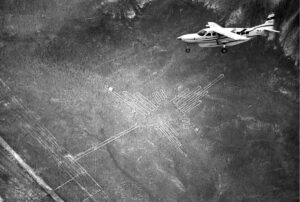The Inca Trail to Machu Picchu beckons every wanderlust traveler, drawing them into a journey marinated in history and sprinkled with scenic beauty. This ancient route, carved by the Incas, not only serves as a physical trail but as a pathway through time, unlocking tales of a civilization long gone but hardly forgotten. Let’s unearth its secrets, dispel myths, and equip you with the knowledge you need for an unforgettable trek.
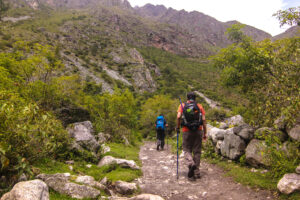
Understanding the Inca Trail
What is the Inca Trail?
Often considered a rite of passage for hikers, the Inca Trail transcends being a mere trek. It was historically a pilgrimage route taken by the Incas to reach the sacred city of Machu Picchu. Today, it’s a testament to Inca engineering, spirituality, and culture, winding through the lush cloud forests and high mountain passes, unveiling archaeological sites that mesmerize with stories of an era bygone.
Where is the Inca Trail Located?
Snaking through the Andes mountains in Peru, it offers hikers a taste of diverse ecosystems, from cloud forests to alpine tundras. While its final destination, Machu Picchu, the journey introduces travelers to numerous lesser-known but equally significant Incan sites. Beginning in Ecuador, the trail has 20,000 miles connecting Quito (Ecuador) and La Paz (Bolivia) making the Cusco route the most famous and visited. This part is located near the Urubamba River, the trail spans rugged terrains, culminating in the world-renowned Machu Picchu.
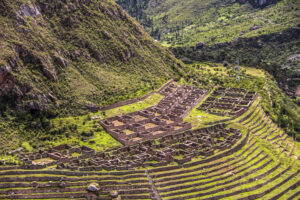
Embarking on Your Journey: Practical Tips
How Long is the Inca Trail?
The Classic Inca Trail is roughly 42 kilometers (26 miles) long and typically takes four days and three nights to complete. While this might sound daunting, the journey is paced to allow hikers to acclimatize and fully absorb the beauty and history. Each day presents a mix of natural landscapes and archaeological sites, making every step worthwhile.
The express Inca Trail is 12 kilometers (8 miles) and takes two days including an overnight at Machu Picchu town. In this version, passengers will visit the magnificent archaeological site of Wiñayhuayna (2,700m), an impressive complex made up of an agricultural center with numerous terraces, a religious sector as well as an urban sector entering through the Sun Gate, and the first amazing and unforgettable view of Machu Picchu citadel.
What to Pack for the Inca Trail?
Packing for the promenade is a balance between preparing for diverse weather conditions and keeping your load manageable. Essential items include sturdy hiking boots, rain gear, sunscreen, and bug repellent. Given the altitude and exertion levels, hydration is key.
Delving Deeper: Unique Aspects and Alternatives
Inca Trail vs. Salkantay: Which to Choose?
The Inca Trail is steeped in history, with well-preserved ruins dotting the way. The Salkantay Trek, on the other hand, is nature’s masterpiece, showcasing the snow-capped Salkantay Mountain and varied ecosystems. While the former offers historical immersion, the latter is a visual treat for nature enthusiasts. Both paths, however, converge at Machu Picchu, ensuring a grand finale.
Inca Trail Alternatives: Beyond the Traditional Path
While the classic Inca Trail is a jewel, other trails like the Lares and Choquequirao treks present equally enticing options. The Lares Trek, for instance, offers cultural immersion, passing through local Andean communities. The Choquequirao Trek introduces hikers to the ‘sister’ city of Machu Picchu, equally majestic but less frequented. Each trail offers a unique perspective on the Andean landscape and history.
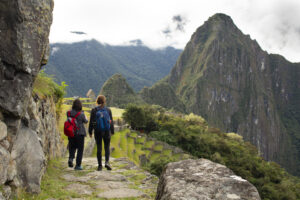
Ensuring a Successful Hike
Best Times to Visit: Inca Trail Best Month
Timing your hike can mean the difference between a pleasurable journey and a challenging ordeal. The dry season, from May to September, is optimal for trekking. But if you prefer fewer crowds, consider the shoulder months. February sees the trail’s closure for maintenance. Always check the weather forecasts and remember that the trail has a daily limit on the number of hikers, so plan ahead.
Addressing Concerns: Inca Trail Altitude Sickness
Altitude sickness can be a real concern, especially for those unaccustomed to high elevations. Symptoms include headaches, nausea, and fatigue. Acclimatizing in Cusco or another high-altitude area before embarking on the trail can help. Drinking plenty of water, avoiding alcohol, and taking it slow is also advisable. It’s always wise to consult with a doctor before your trip.
We highly recommend staying two nights at least at the Sacred Valley or Cusco for better acclimatization.
Tours and Views: Making the Most of the Experience
Inca Trail to Machu Picchu Tours
Going solo on the Inca Trail can be rewarding, but joining a tour often enriches the experience. Guided tours offer insights into the historical and cultural significance of the sites, ensure proper acclimatization, and often take care of logistical concerns like permits and camping arrangements. Choose a reputable operator to ensure an authentic and responsible trekking experience.
Inca Trail Views: Visual Feasts Along the Way
Beyond Machu Picchu, the Inca Trail offers a plethora of stunning vistas. From the verdant beauty of the cloud forests to the ethereal charm of the Sun Gate at sunrise, every twist and turn of the trail reveals a new spectacle. Key sites include the archaeological wonders of Llactapata, Runkurakay, and Sayacmarca, each telling tales of Inca ingenuity and spirituality.
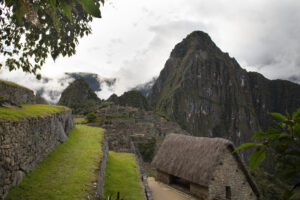
The Inca Trail isn’t just a hike; it’s a journey through time, nature, and soul. As you trace the steps of ancient Incas, marvel at Mother Nature’s artistry, and push your physical limits, you’ll discover facets of yourself previously unexplored. This trail is more than just a route to Machu Picchu; it’s a pathway to self-discovery and a deeper appreciation for our world’s wonders. Whether you walk alone or with companions, this hike promises memories that last a lifetime. Are you ready to explore with us?
Table of Contents
Toggle


